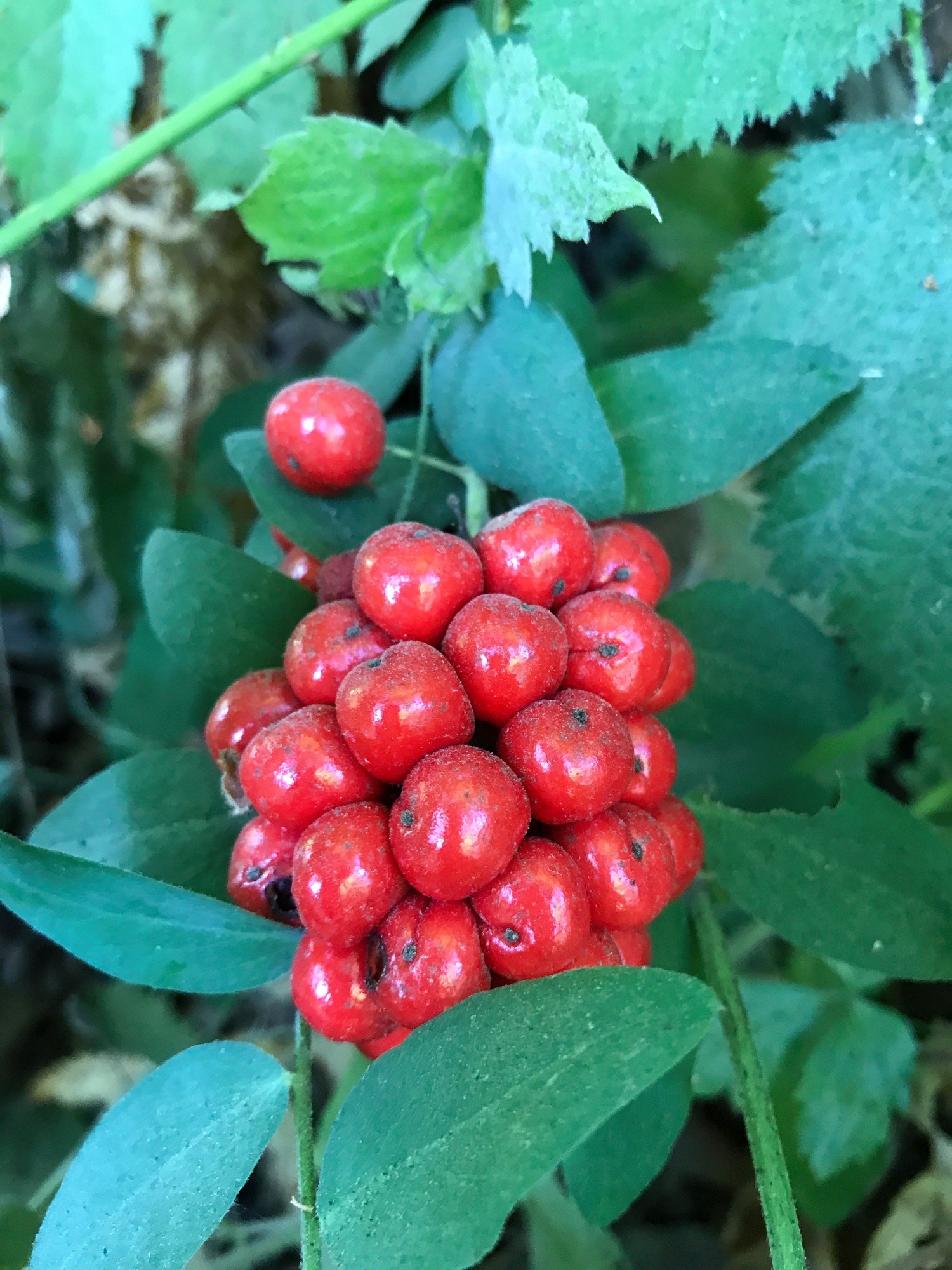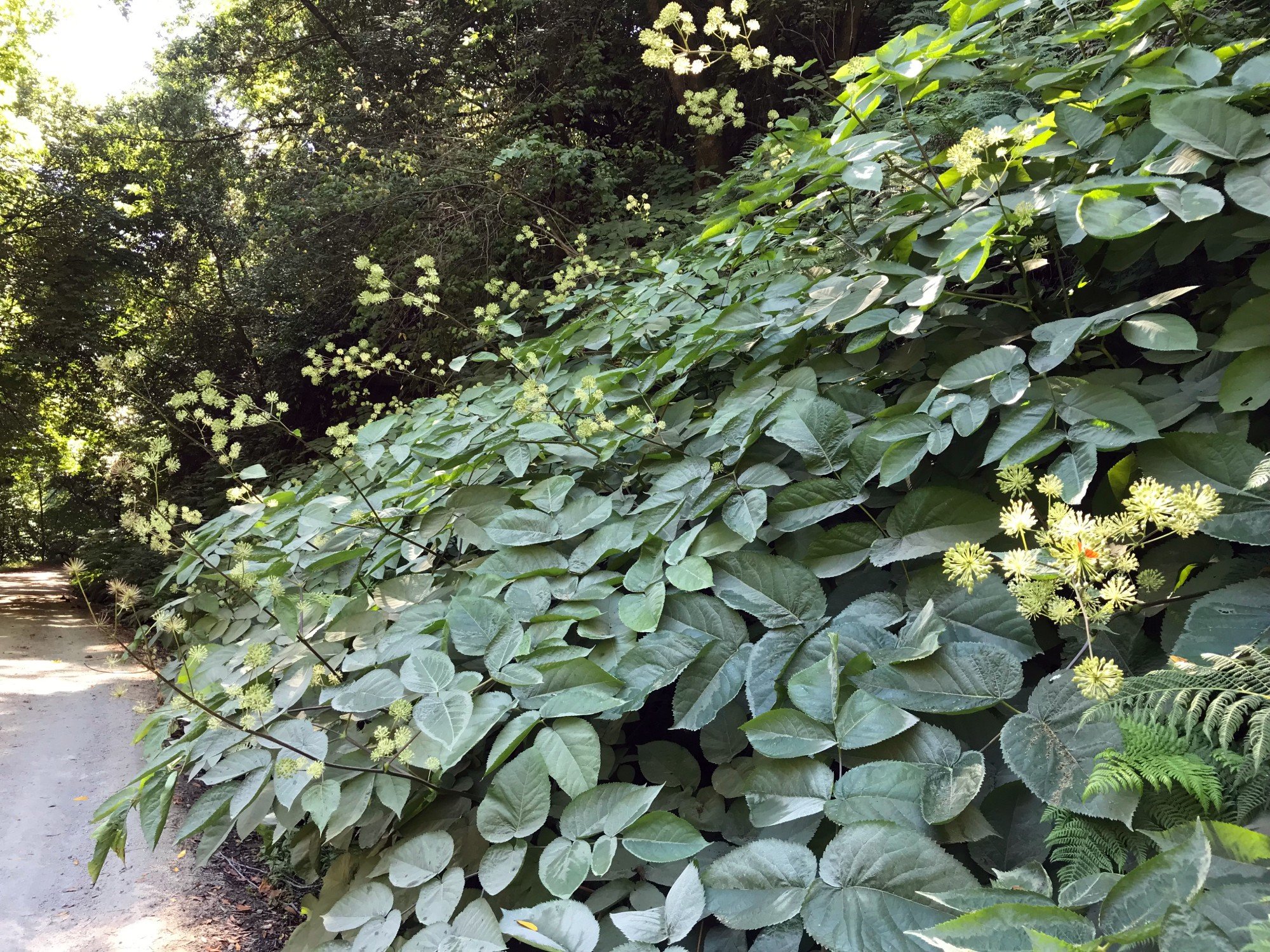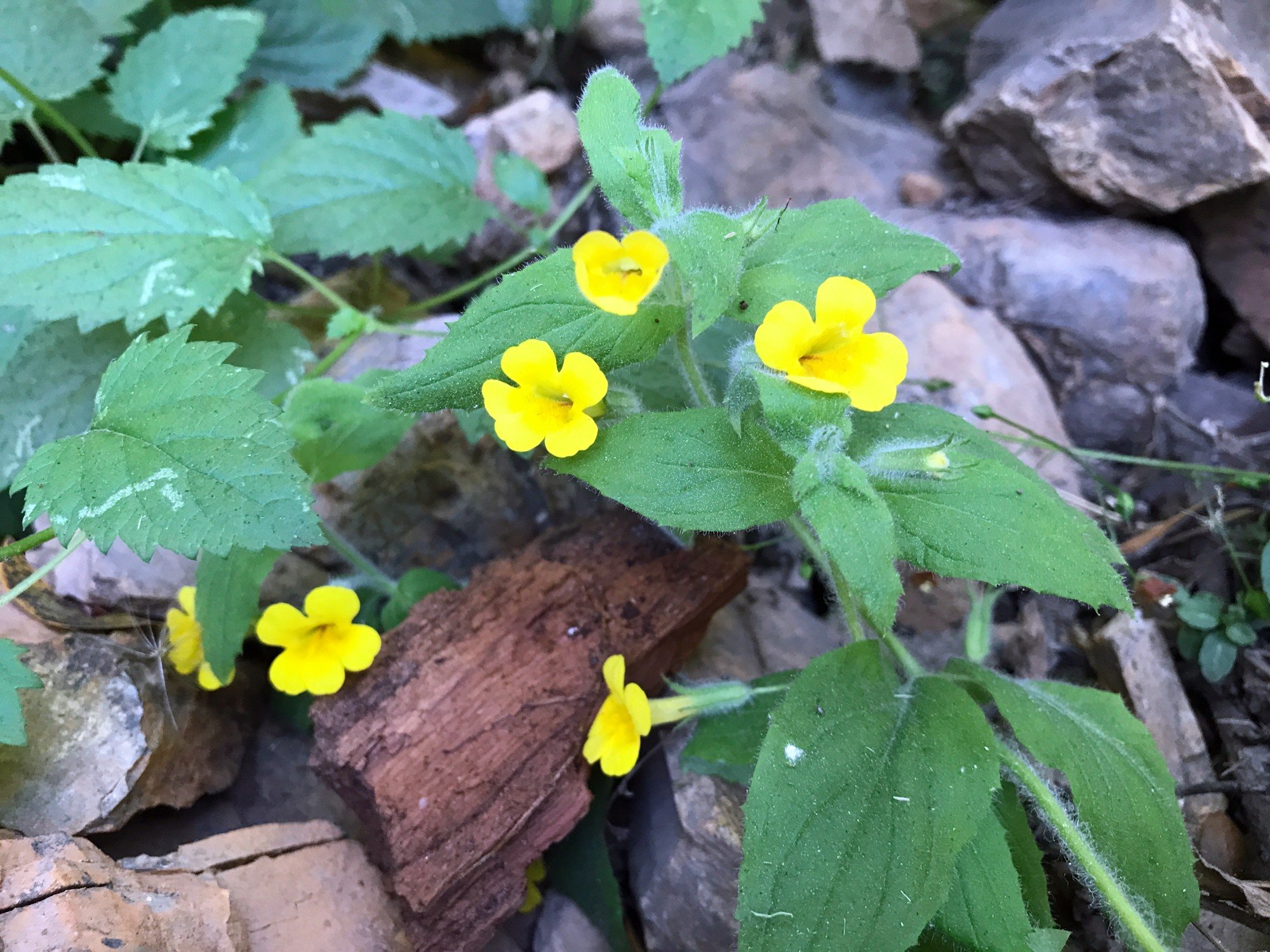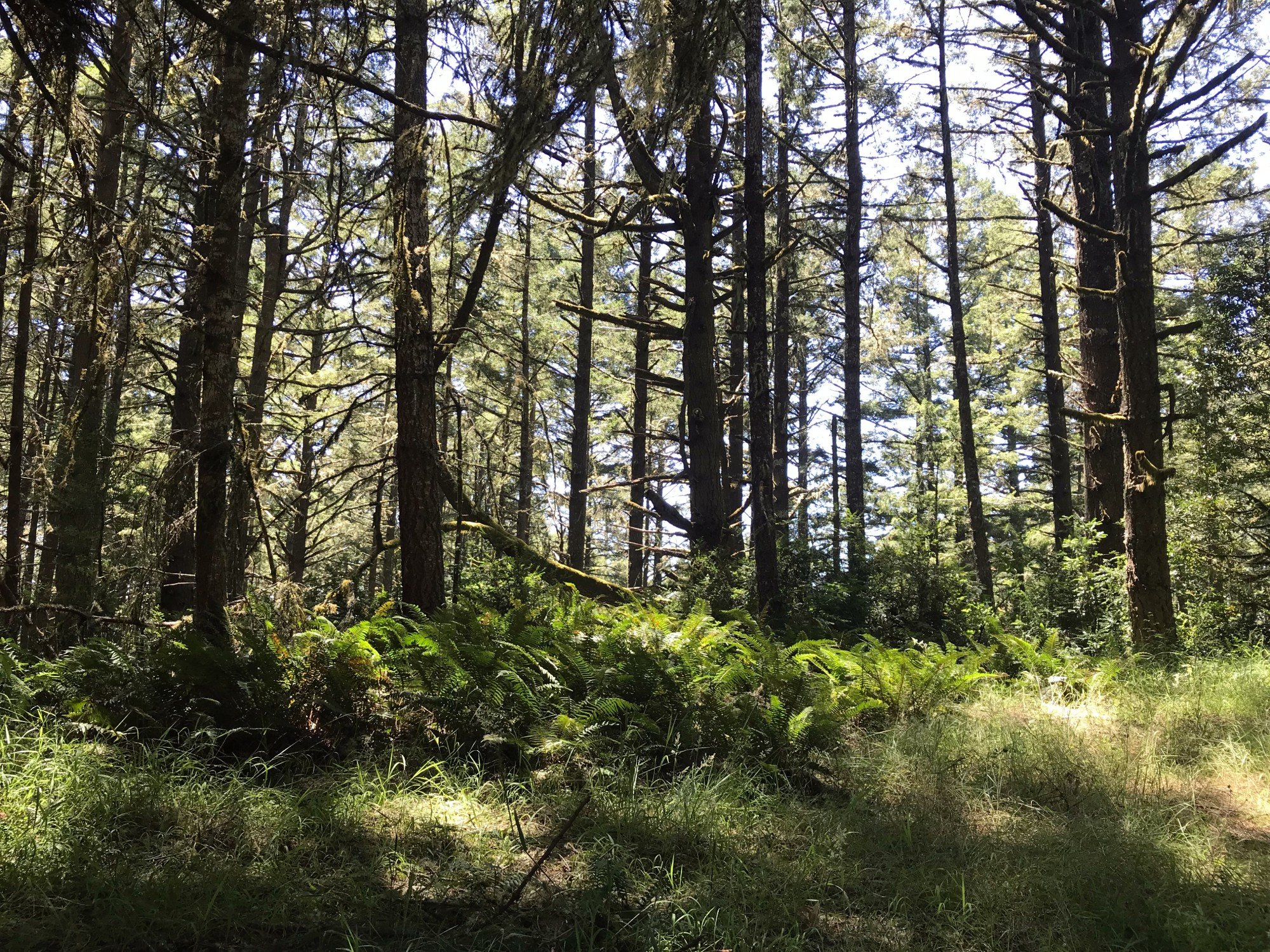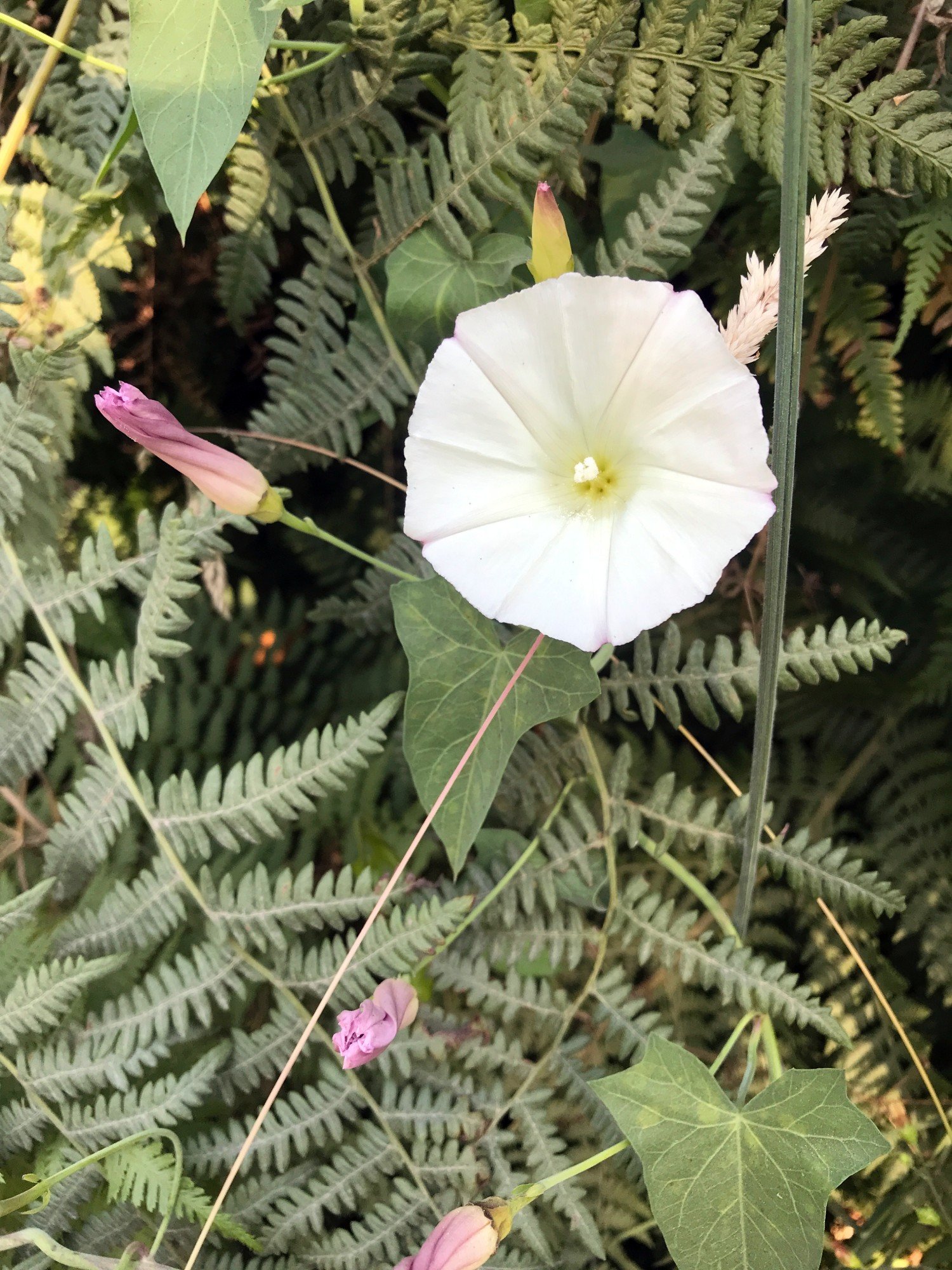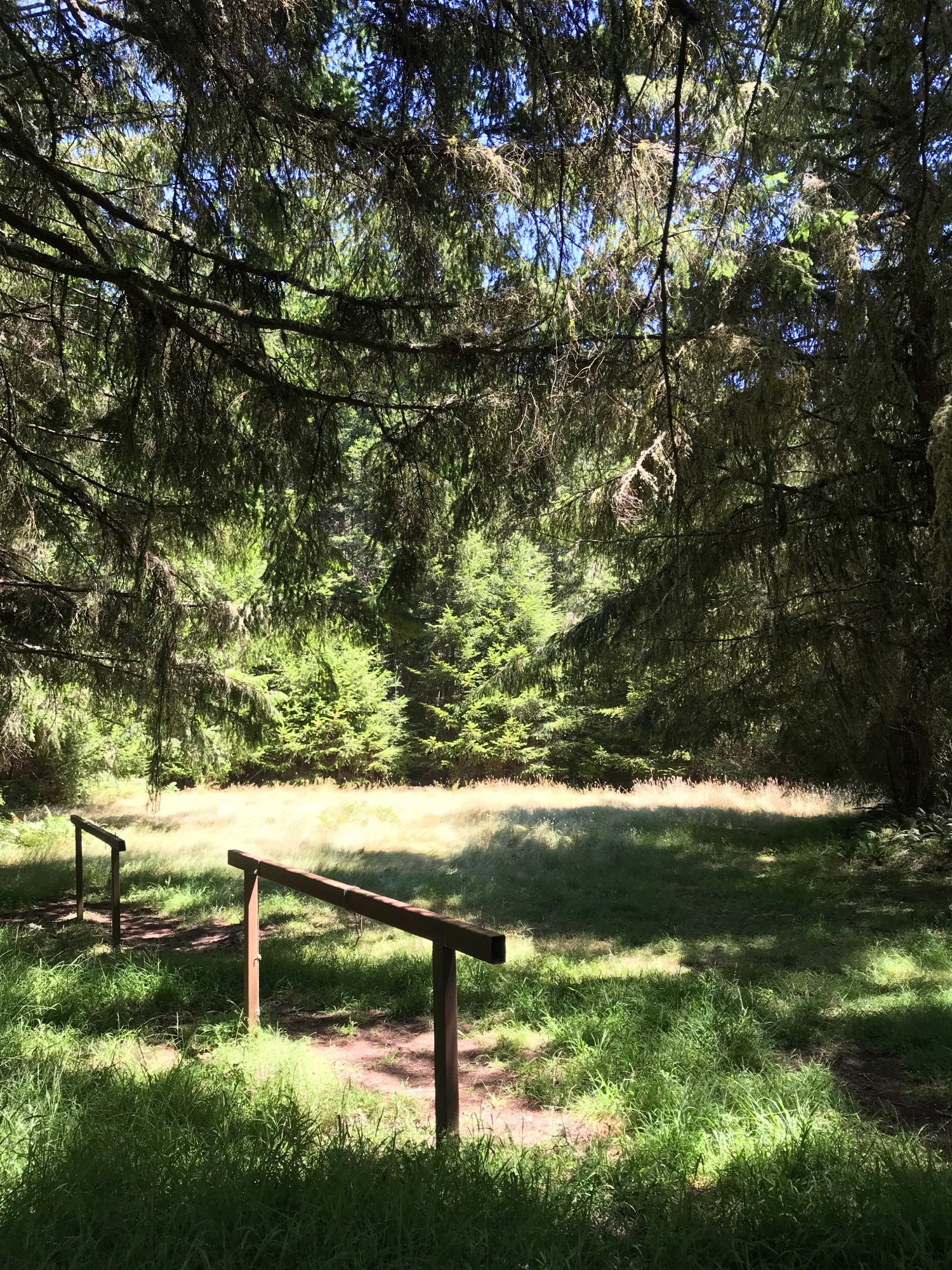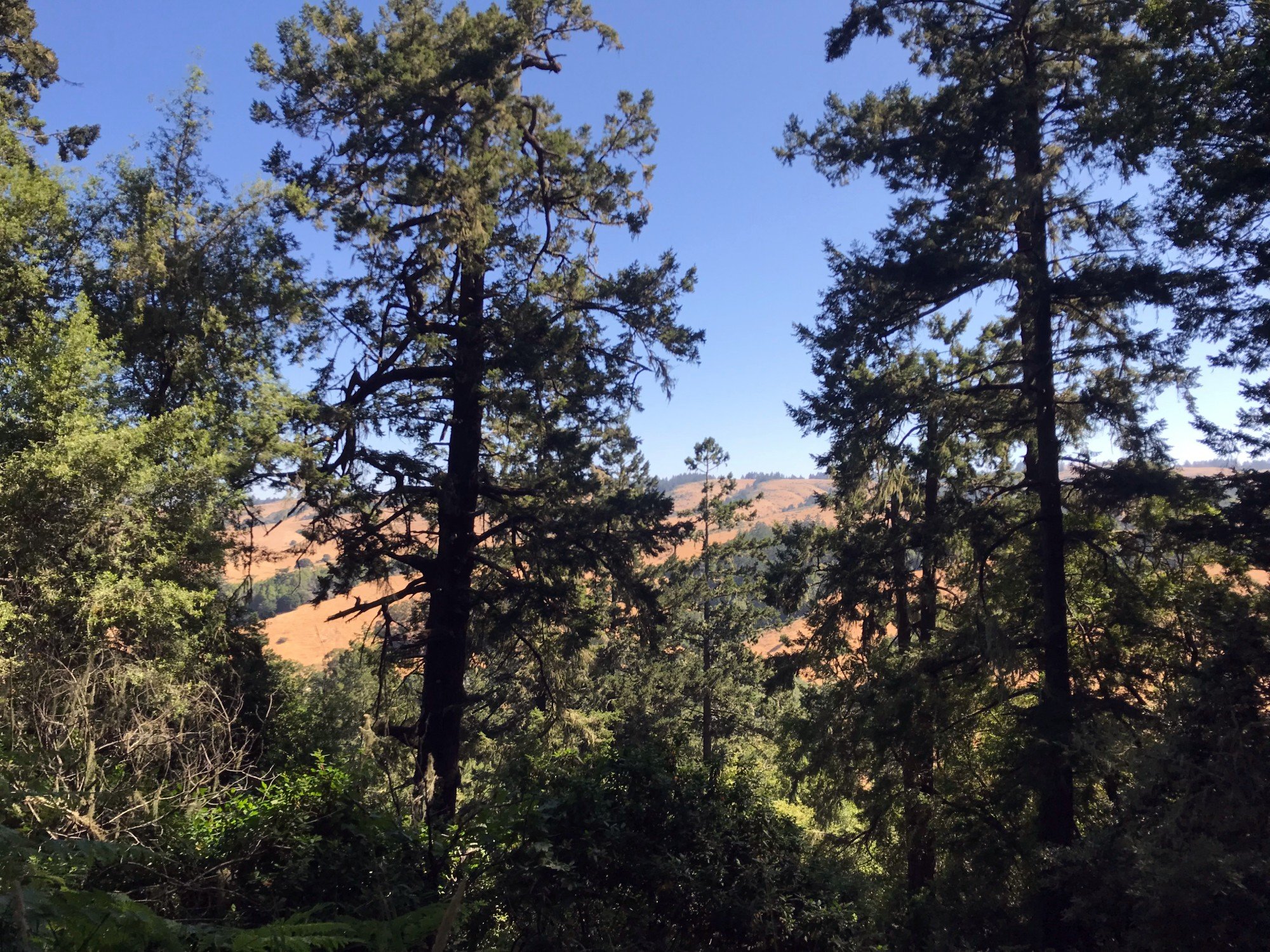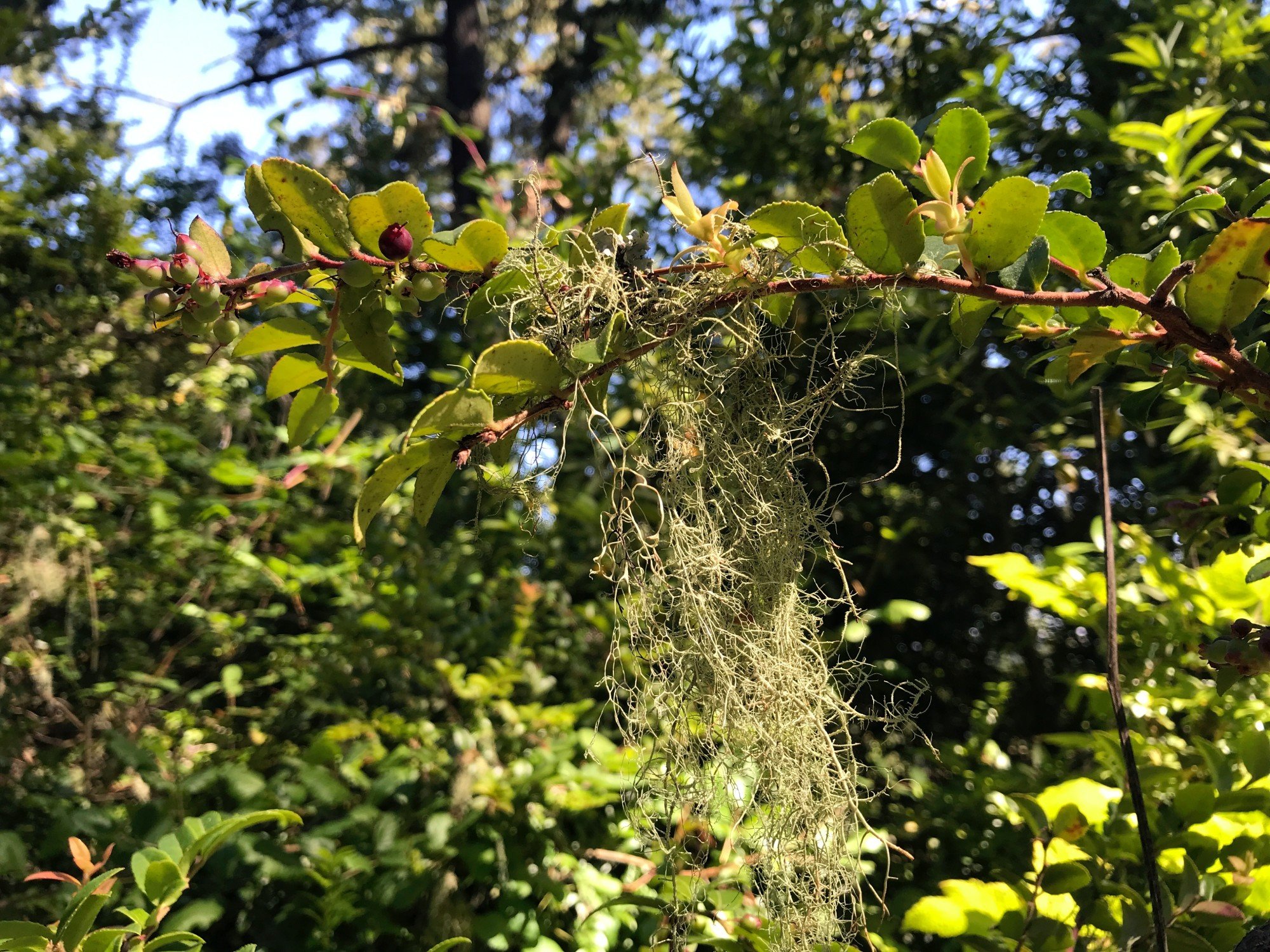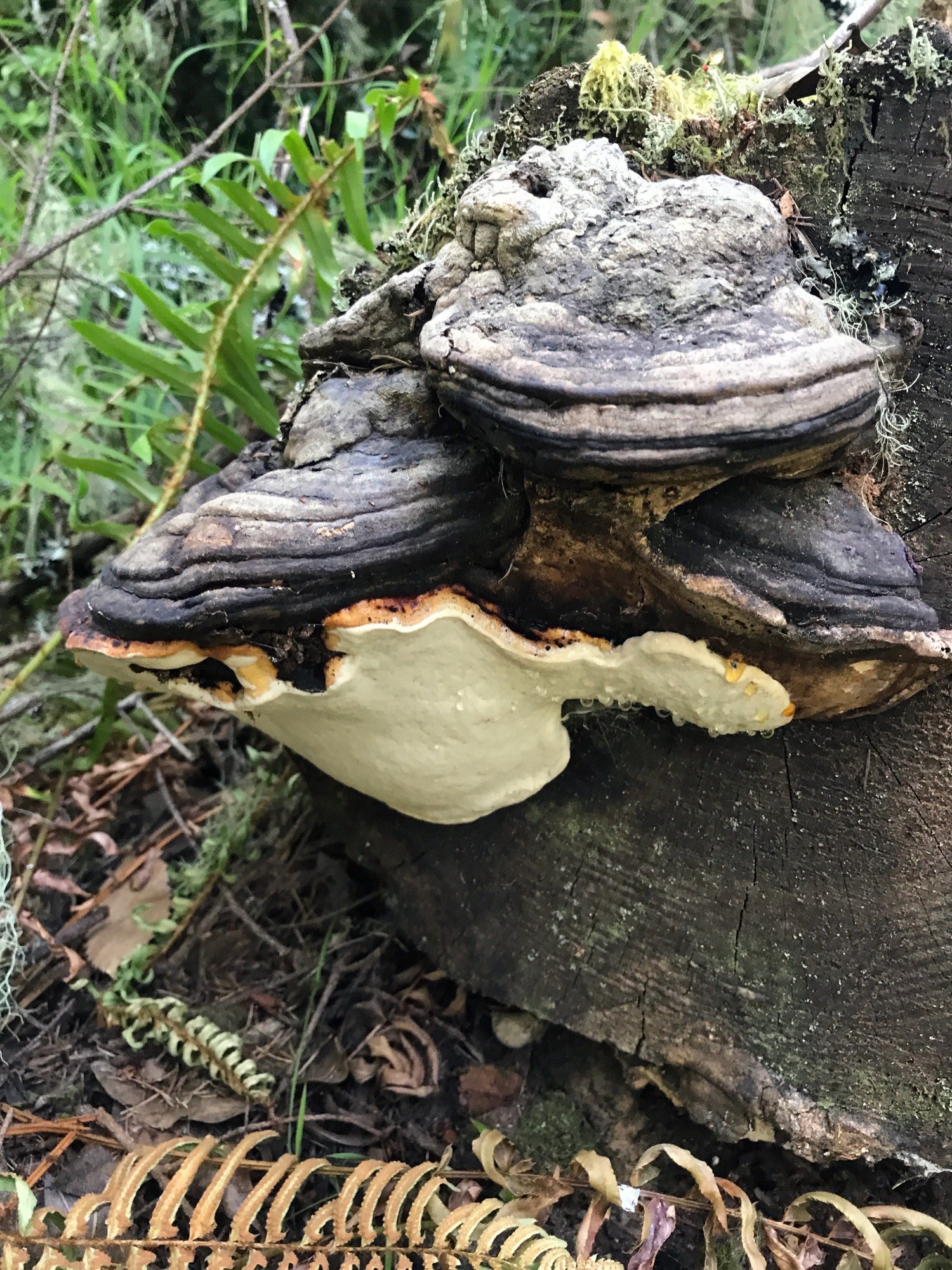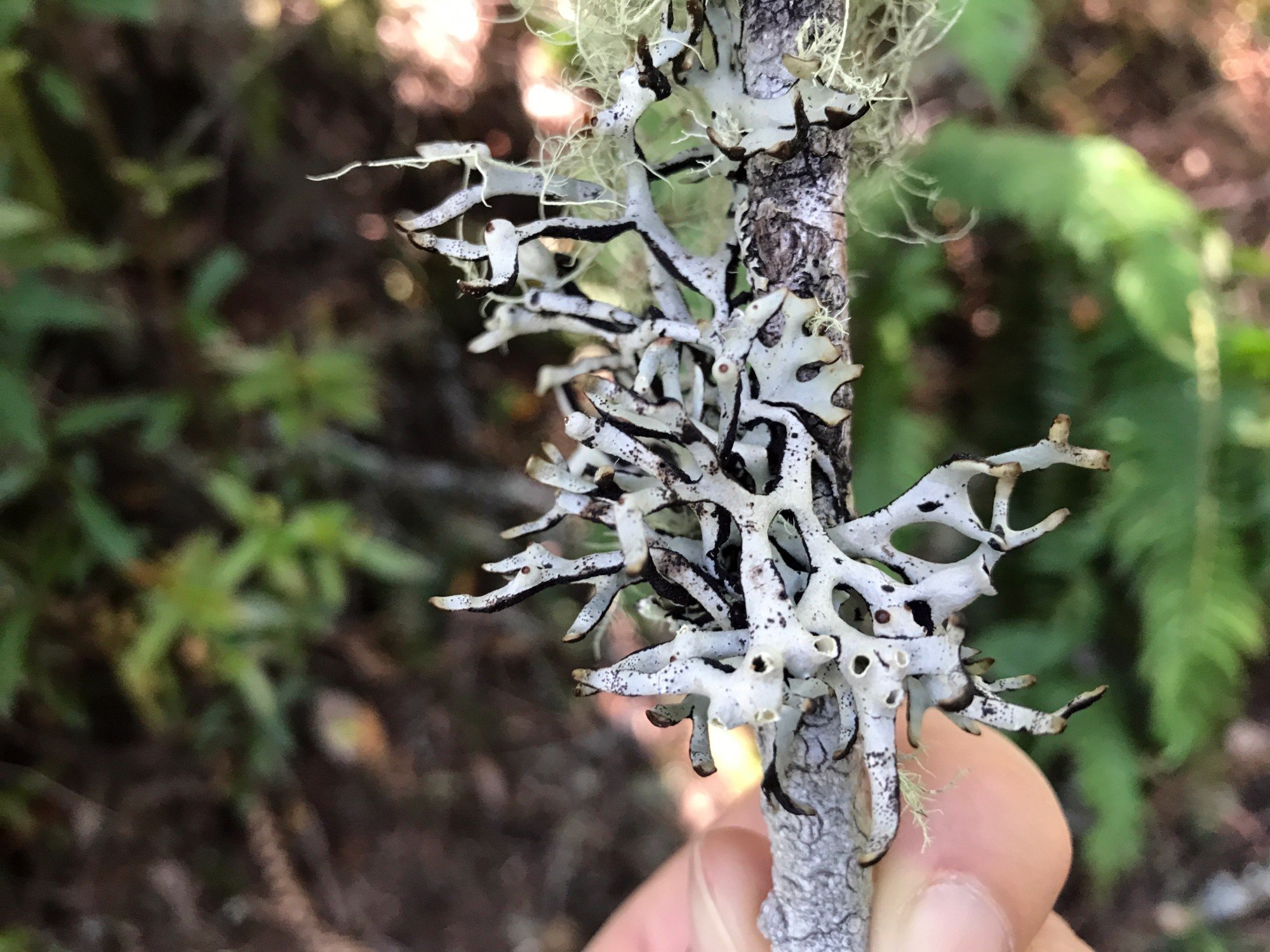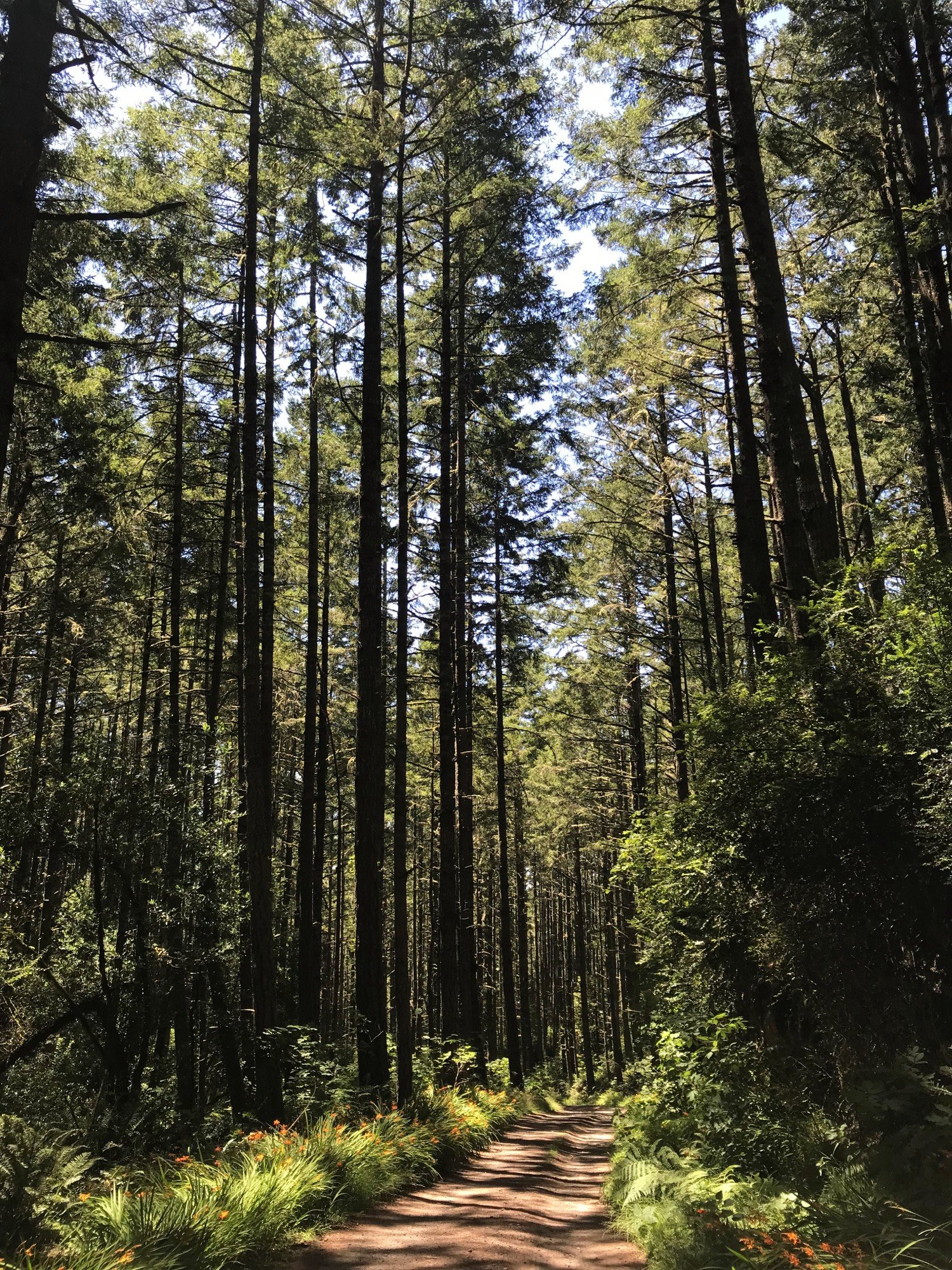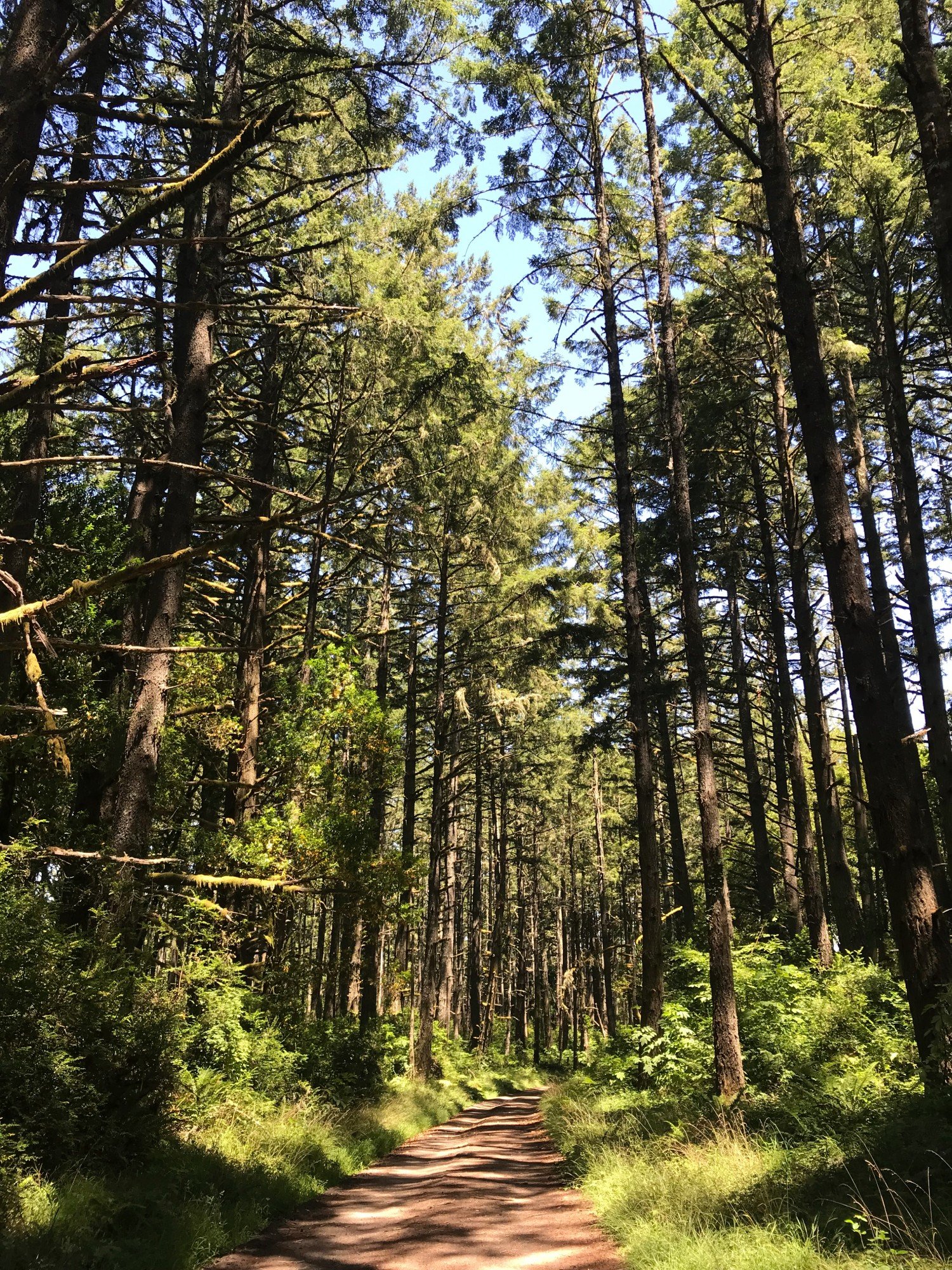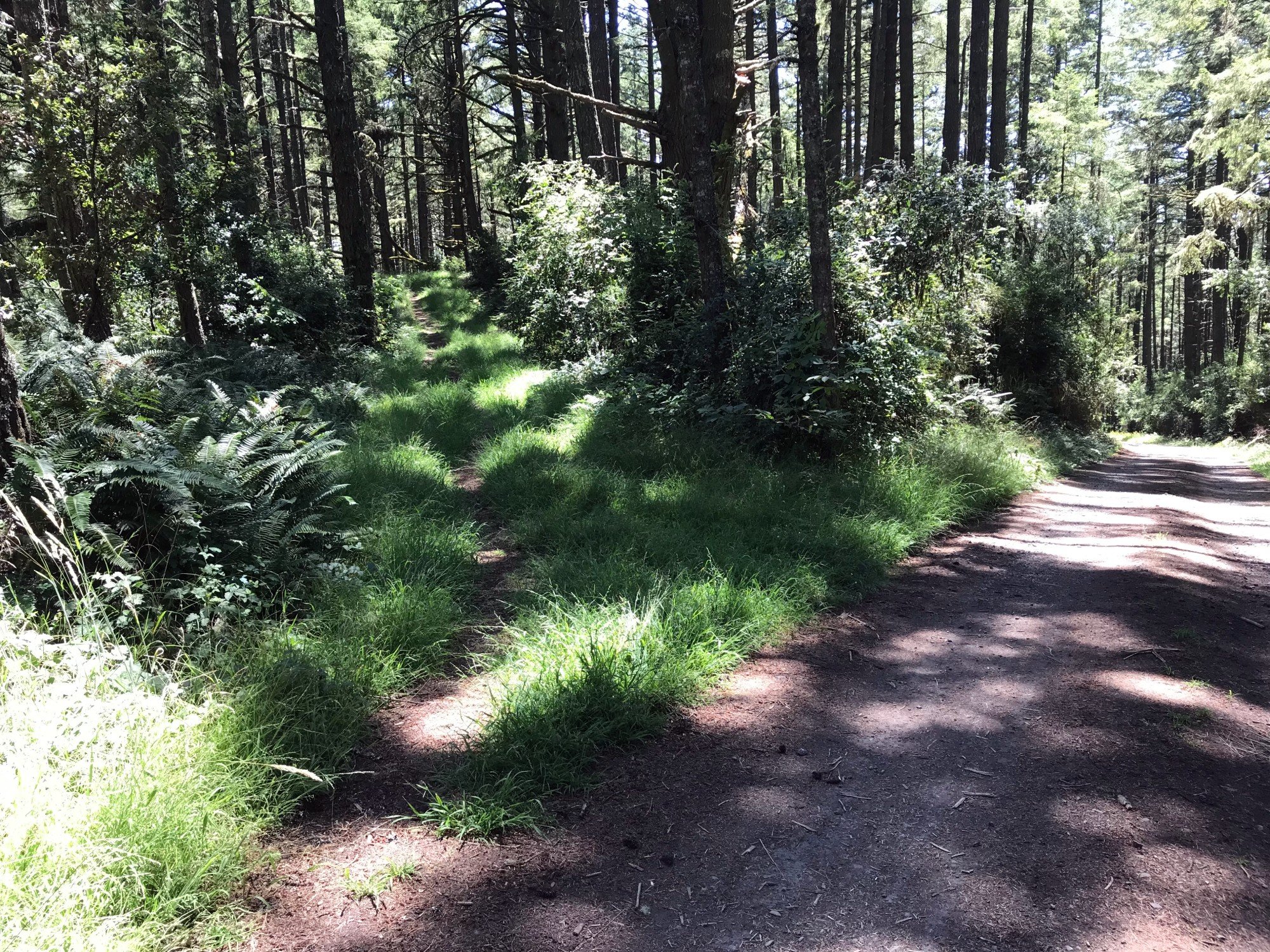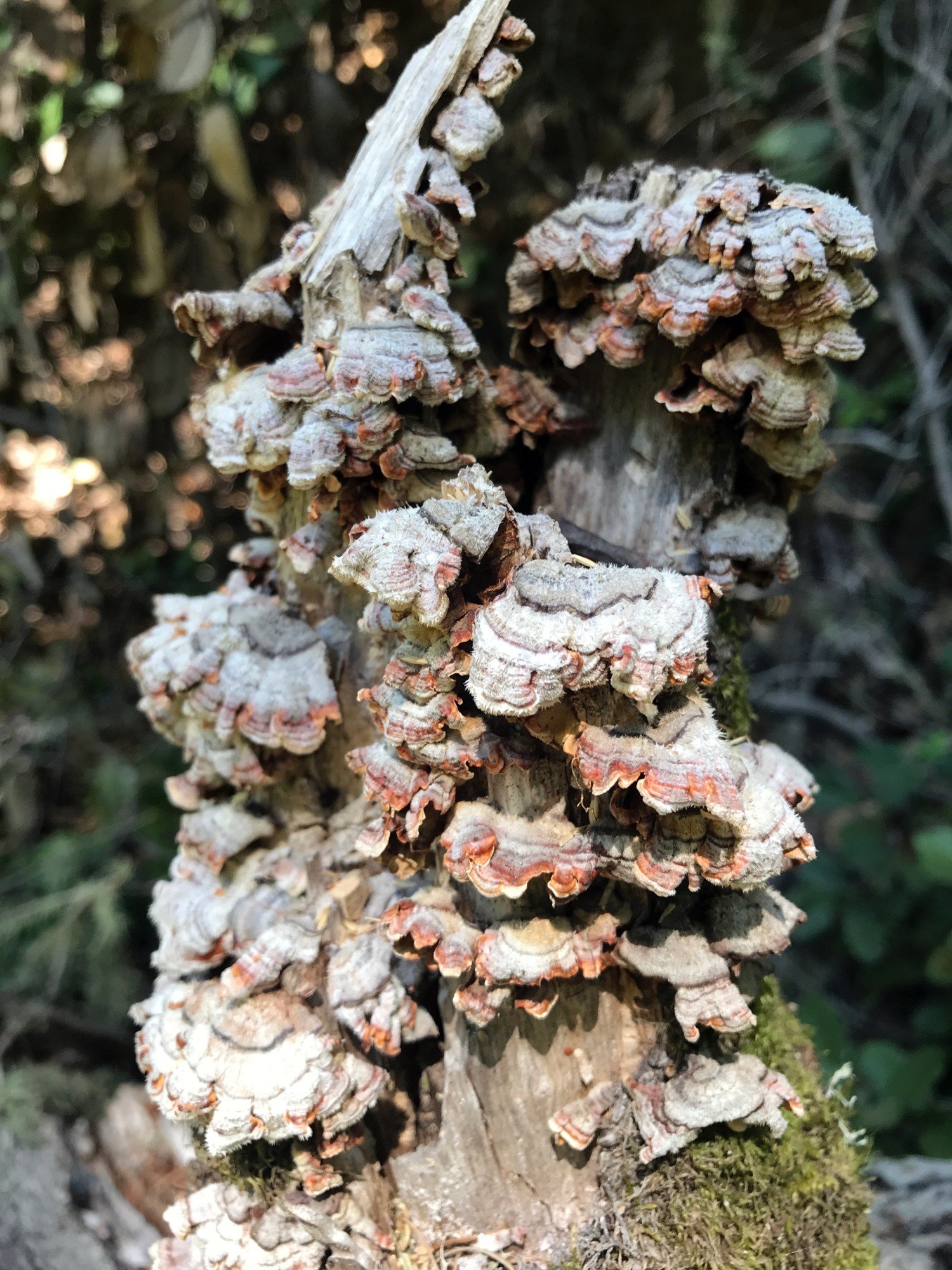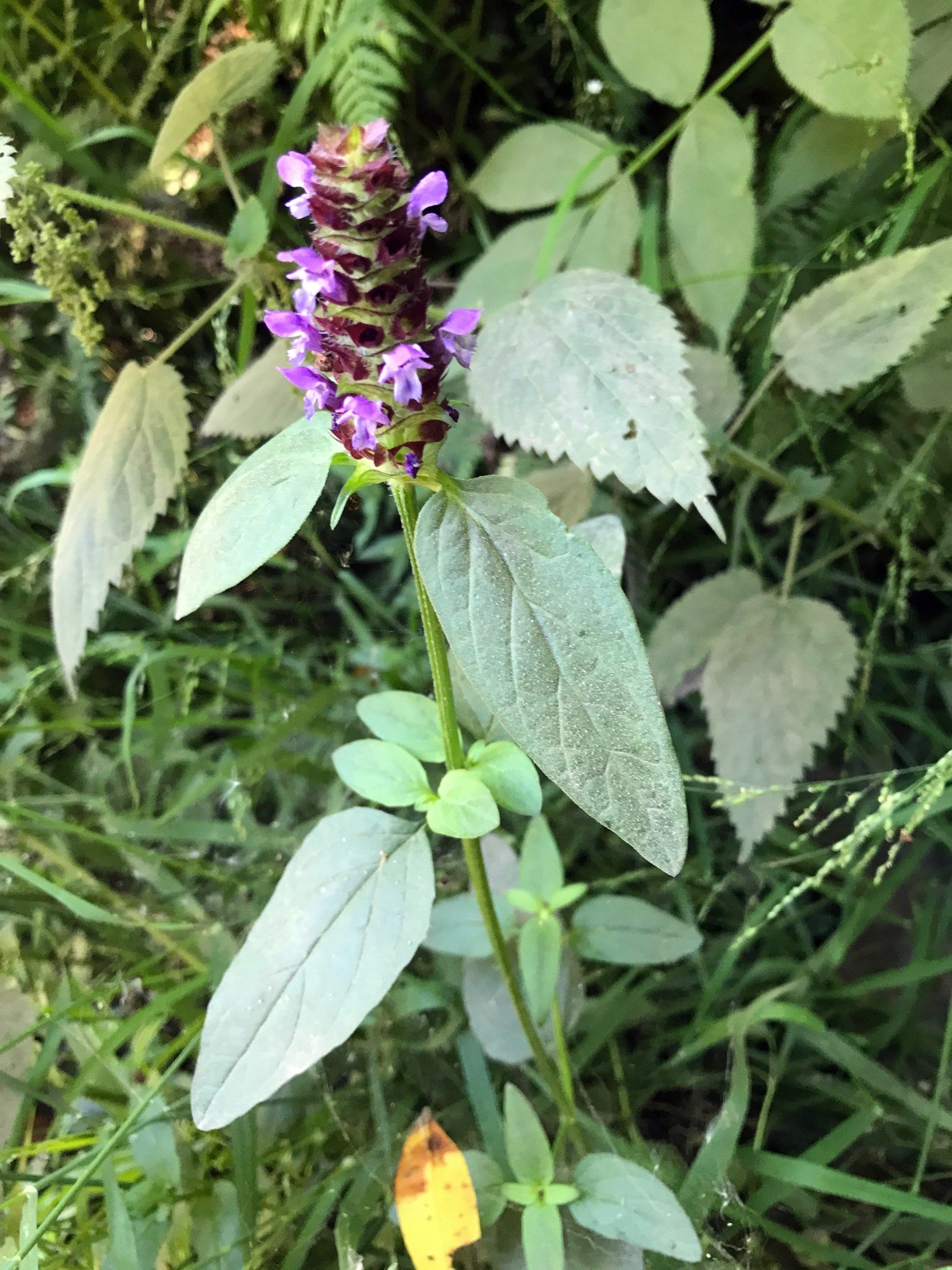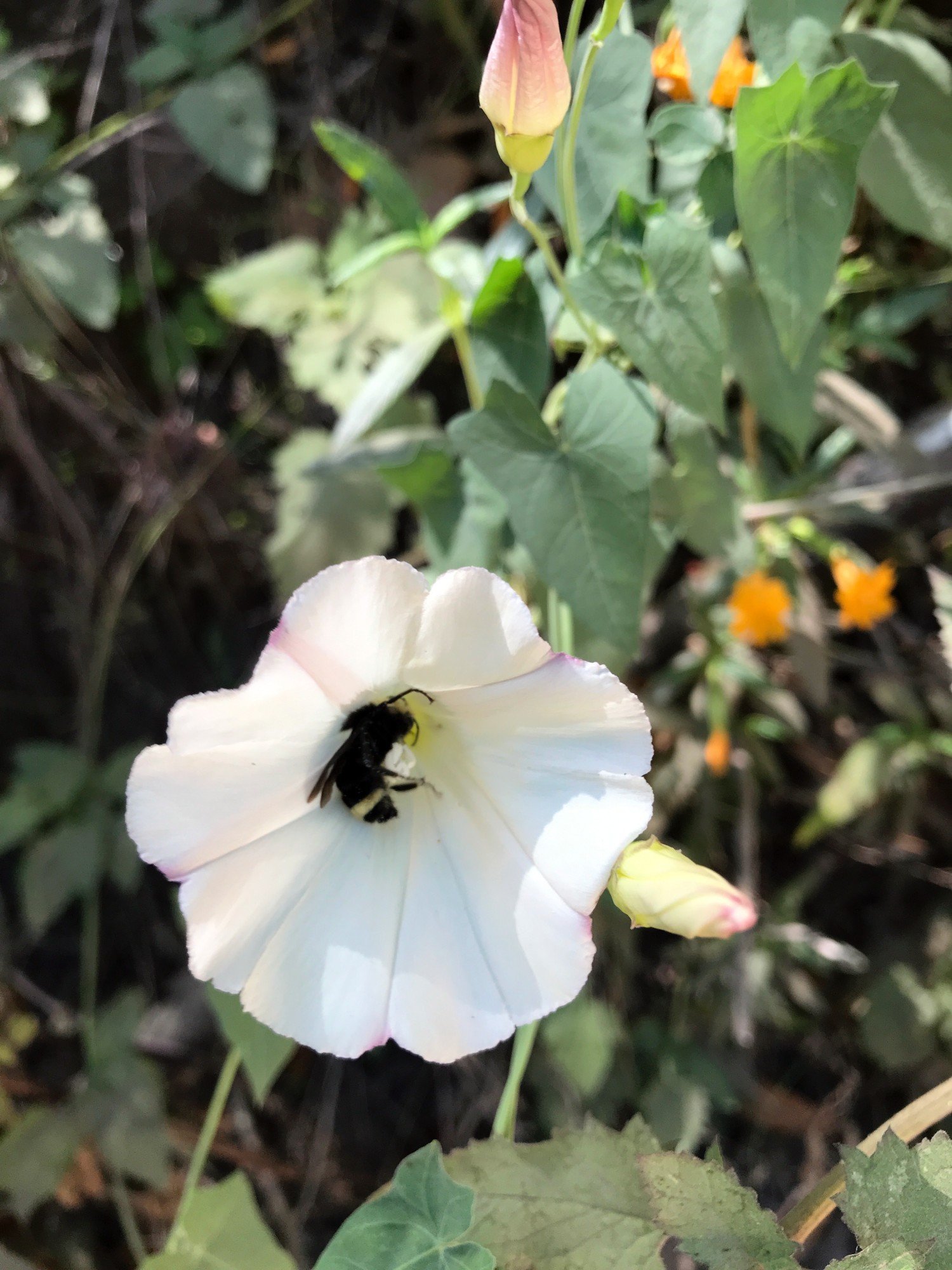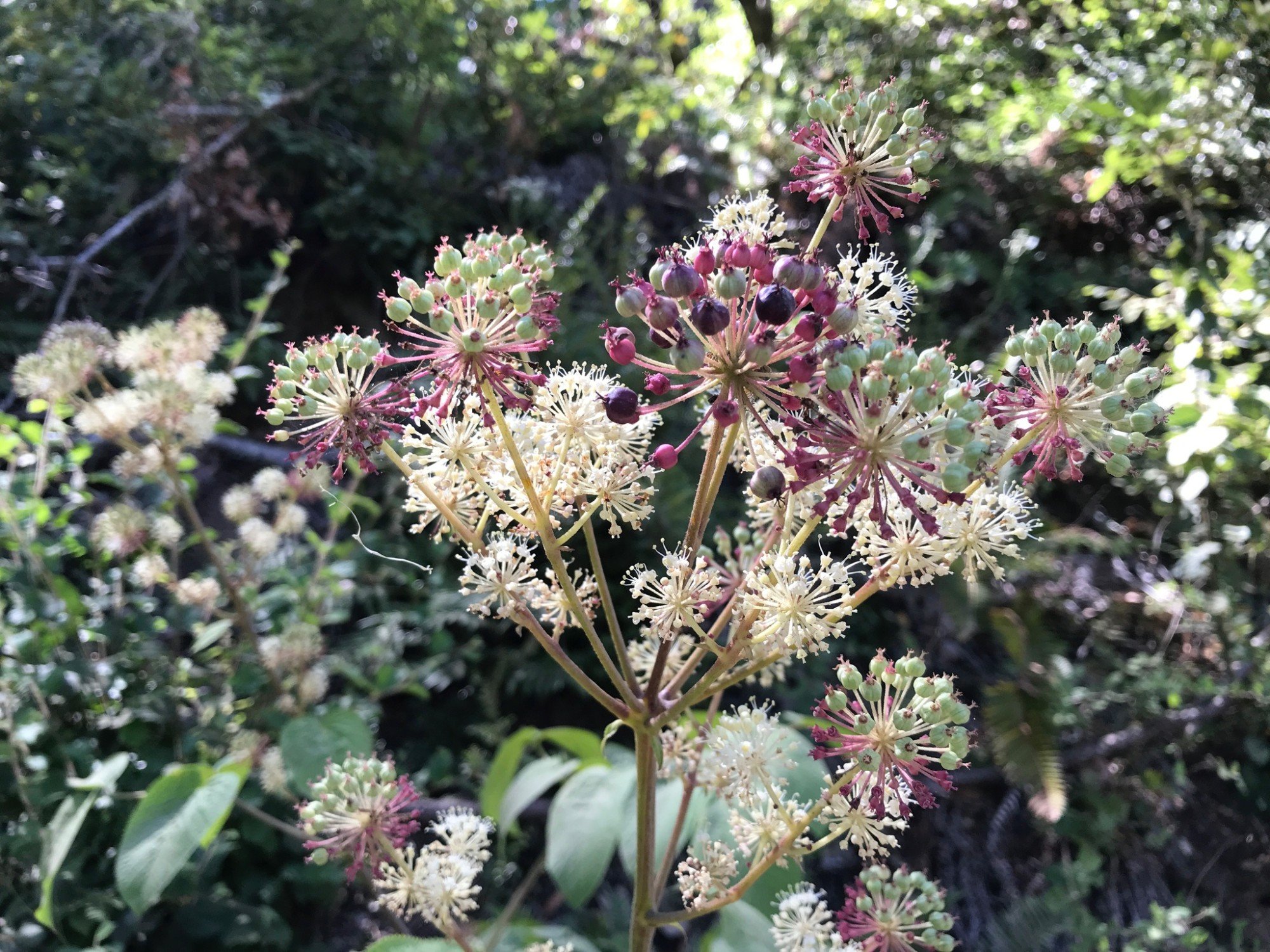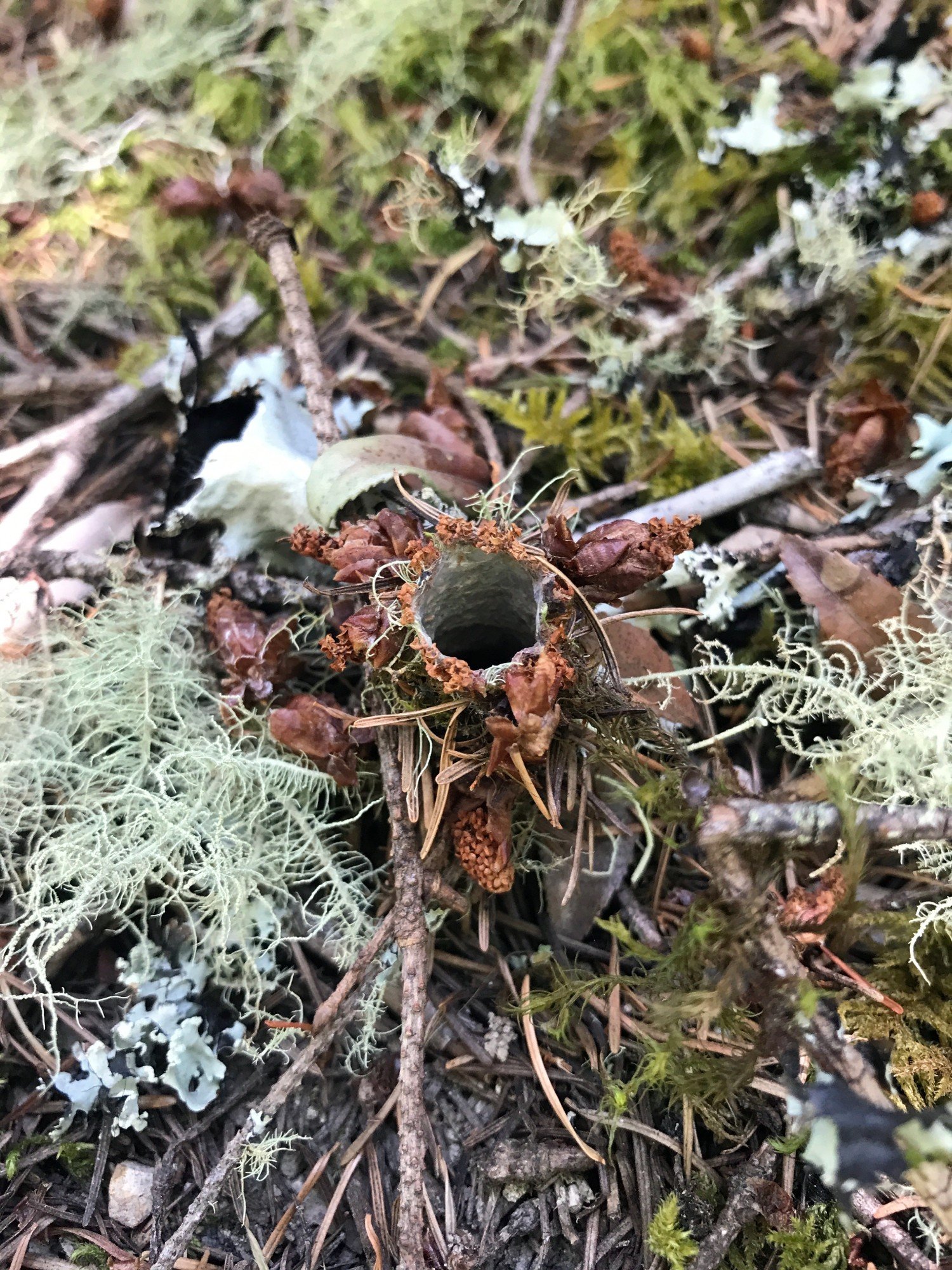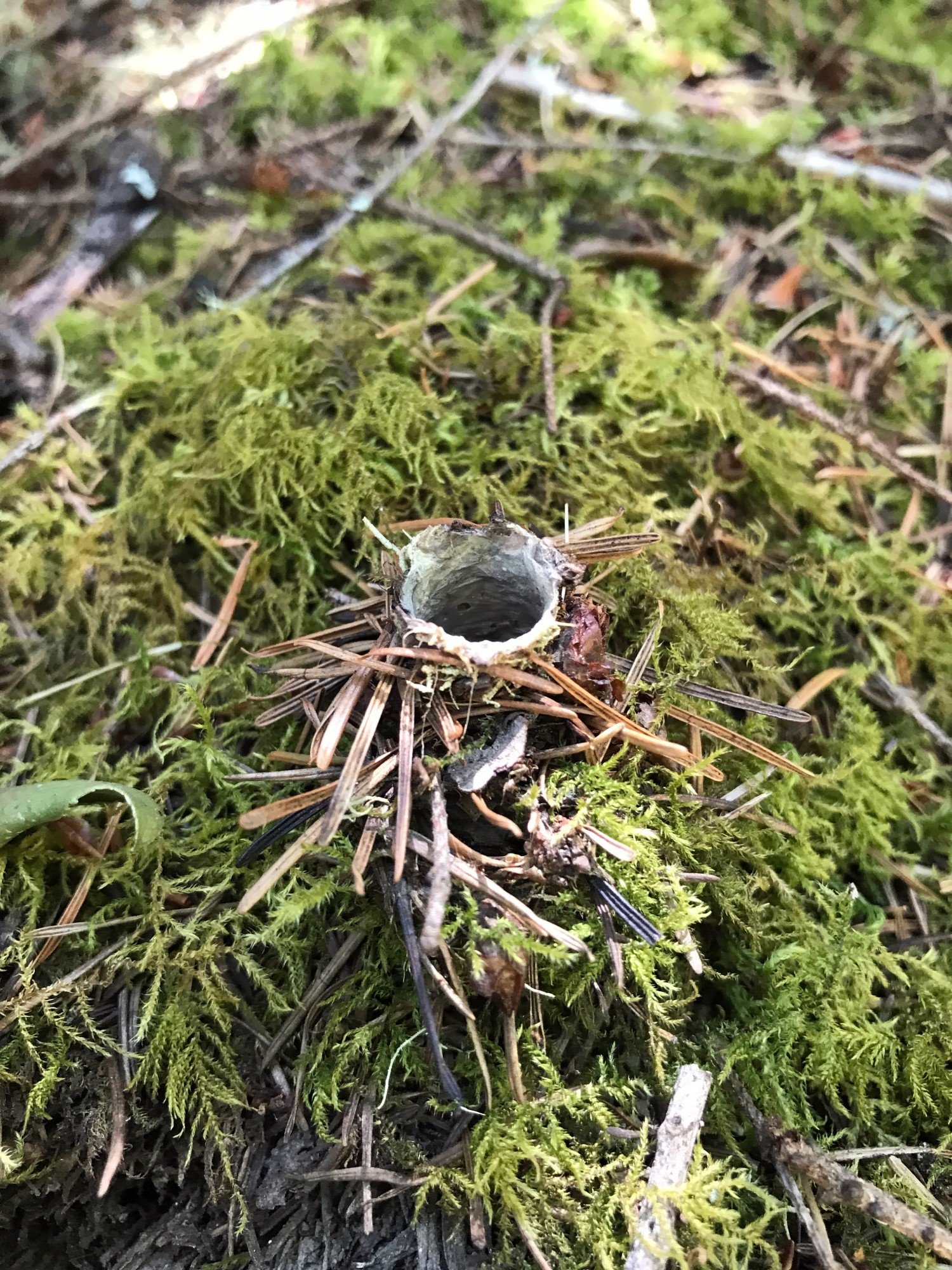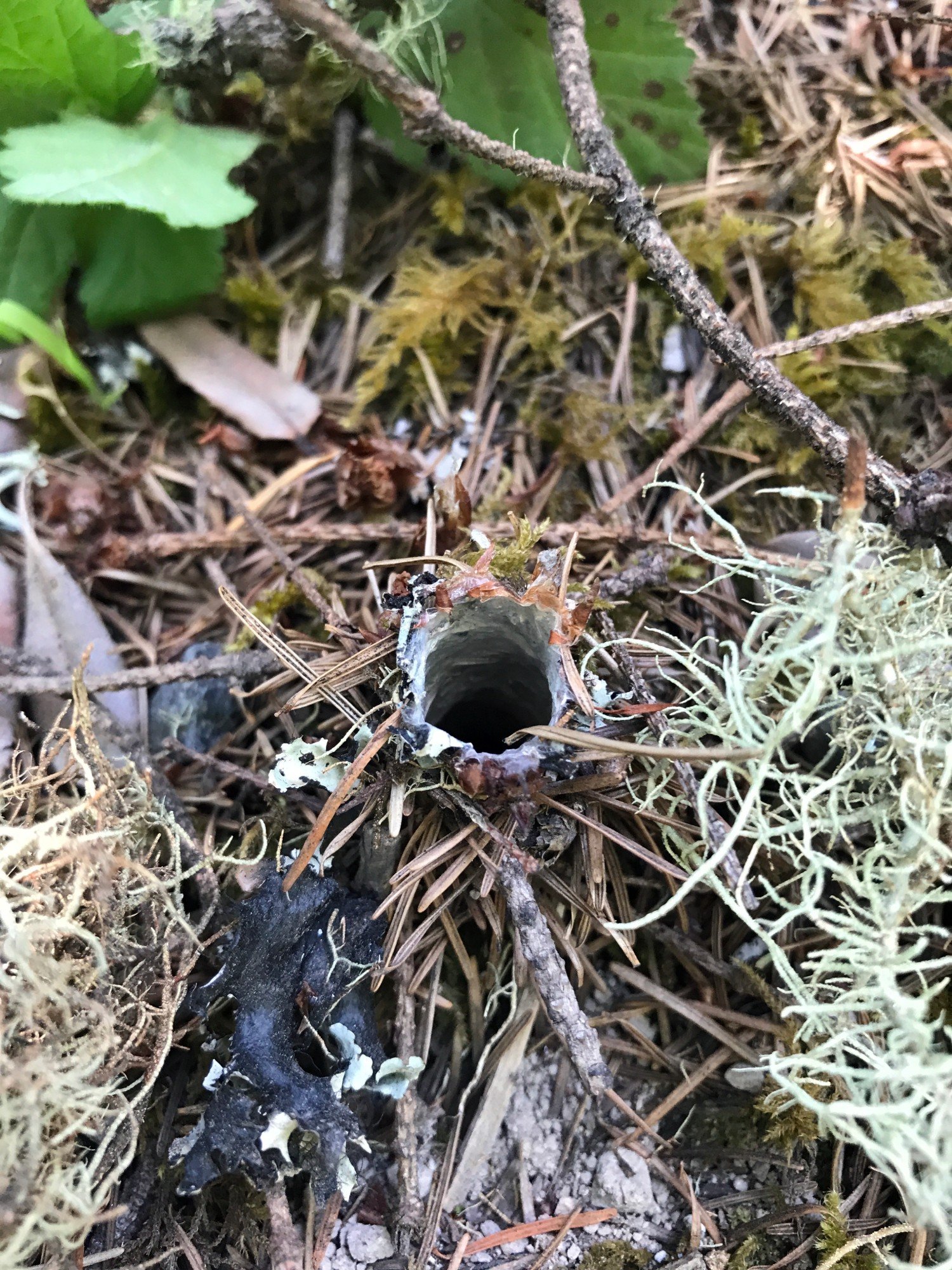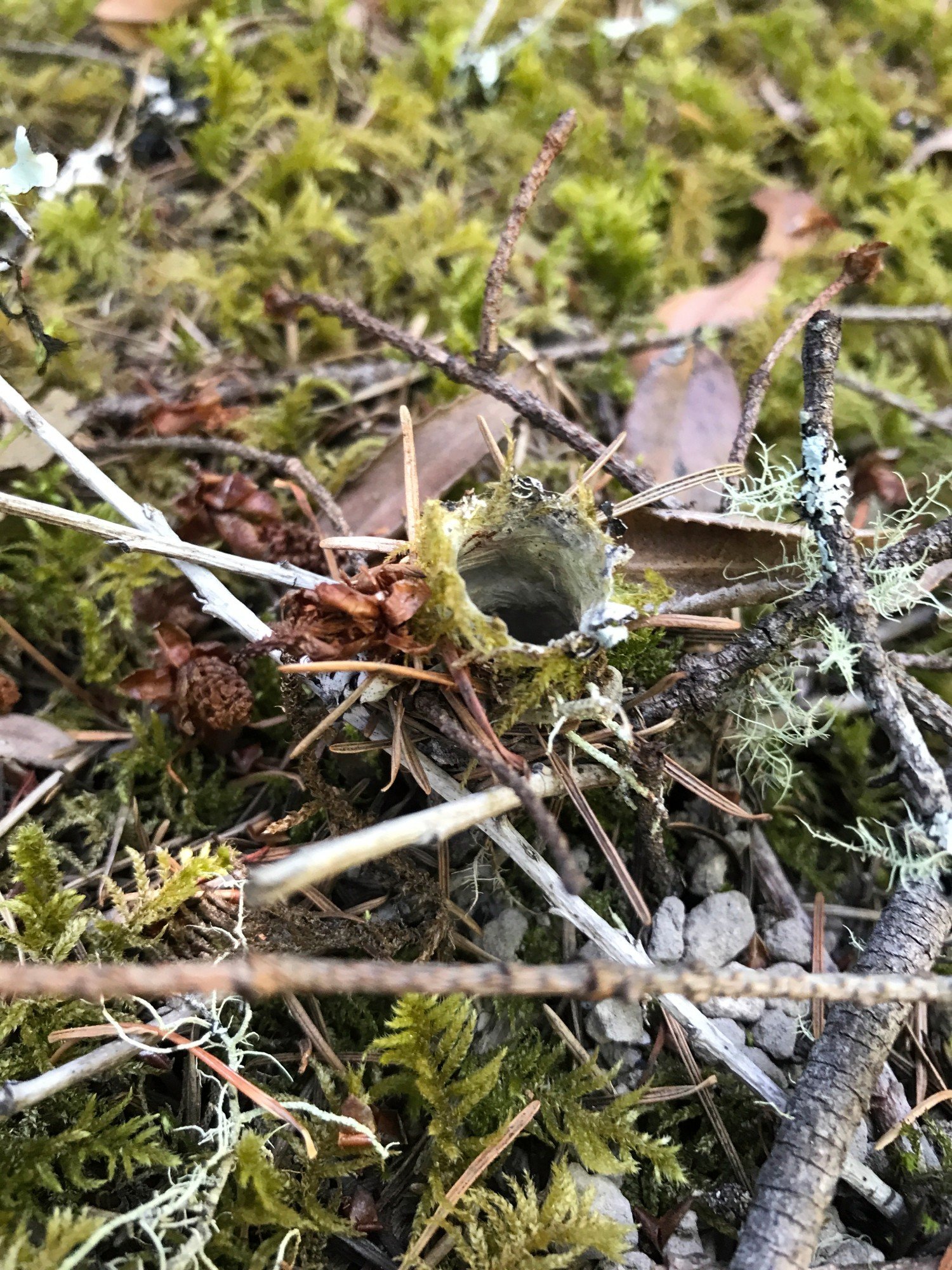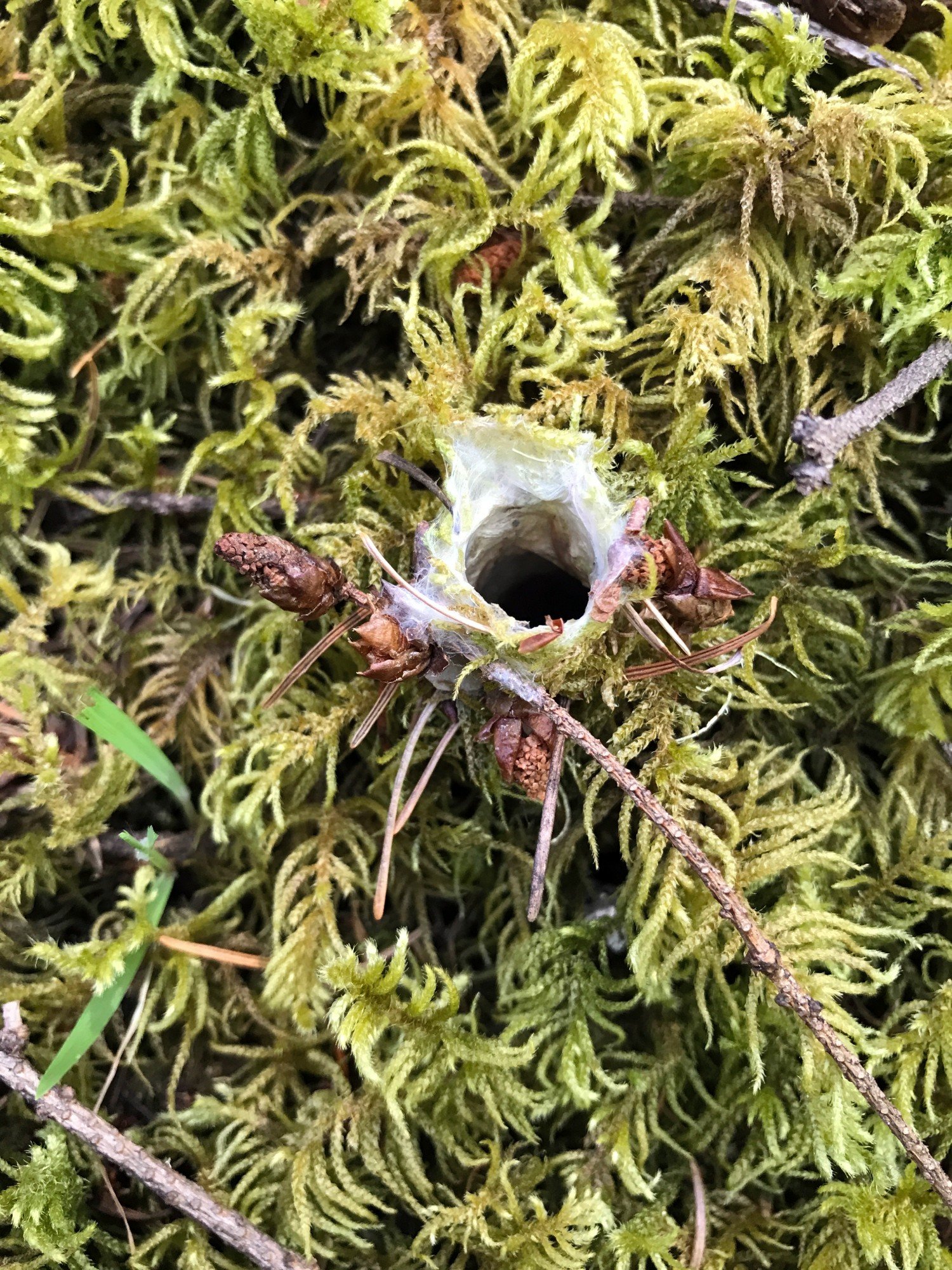Stewart-Greenpicker Loop
Trail length: 8 miles, loop
Time: 3-6 hours
Terrain: oak, fir, bay, maple forests
Restroom? Yes, at Five Brooks
Parking: Yes, large parking lot at Five Brooks
Bikes are allowed on the Stewart Trail only
Dates visited: 7/31/23
Favorite plants on this trail: California Spikenard (Aralia californica)
Favorite spots: The last section of the Greenpicker trail as you approach Firtop has beautiful filtered light through the Douglas firs.
A mostly-shaded 8-mile loop on the Stewart and Greenpicker trails. Gradually ascend the Inverness Ridge to Firtop on the deep forest Greenpicker Trail and enjoy a relaxing descent on the wide gravel Stewart Trail. Watch for California Turret Spider burrows along the mossy banks, and enjoy the many birds in this area.
In the wet season, the Greenpicker Trail turns into a mudslide so avoid this trail when it’s raining.
Starting at the Five Brooks Trailhead:
Hike a short distance along the Mill Pond to the intersection with the Olema Valley Trail (going left) and Stewart Trail (going right) (0.3 miles)
Take the Stewart Trail to the Greenpicker Trail (1.0 mile)
Hike the Greenpicker Trail to the split (1.8 miles)
Take the Greenpicker Trail that splits to the right toward Glen camp and Wildcat camp (0.7 miles) - mostly gradually downhill
At the split for Glen camp/Wildcat camp, take the unmarked path to the left to the Stewart Trail (near the Ridge Trail)
Turn left on the Stewart Trail and hike uphill to Firtop (0.3 miles), then continue downhill on the Stewart Trail back to the trailhead (3.9 miles)
Shortcut: At step 6, instead of taking the Stewart Trail to the left toward Firtop, cross over the Stewart Trail to the Ridge Trail (to the right). You’ll pass the Alamea Trail at (0.1 miles) and in another (0.5 miles) the Ridge trail splits with a spur on the left going back to the Stewart Trail (0.1 miles). Turn right and take the Stewart Trail back to the trailhead. This shortcut on the Ridge Trail shaves off 0.4 miles.
A bigger shortcut: Skip the second part of the Greenpicker Trail (0.7 miles) and go directly to the Stewart Trail at Firtop. This saves one mile.
A note on maps: The Five Brooks area is one of the few areas in Point Reyes National Seashore where the park’s otherwise stellar double-sided Hiking Map is lacking in sufficient details such as mileage around the Mill Pond or details for the shortcut above. The other place where the map fails is nearby with the Glen trails which are a warren of small trails on the map. In these cases, I recommend the Bay Area Trail Map of Point Reyes published by Redwood Hikes Press.
California Turret Spider Burrows
Along the mostly-shaded Stewart trail where the banks were moist and covered in moss, I spotted an area rich in the silk tunnel burrows of the California Turret Spider (Atypoides riversi). Be warned, once you start looking for these ingeniously camouflaged burrows in the ground, it will be hard to stop. Your hike will grind to a snail’s pace. This is exactly what happened to me. Once you find one turreted burrow, look around to see how many others you can find in the area. The baby spiders don’t go far from home to make their own burrows. I saw as many as 9 turrets within a few feet. I’m sure there were many more burrows that I missed.
The silk turret openings are cleverly masked using debris from the area such as fir needles, lichen, moss, sticks and more. The turrets are most easily spotted against the background of green moss. The spiders need an area that stays moist and cool all year since they are susceptible to drying out and they never leave their burrow.
Read more about these fascinating spiders in my news post Home alone with the California Turret Spider. My new question is: Do California Turret Spiders outgrow their homes and make new ones or do they enlarge their home as they grow? The difference in size of the turrets can vary greatly.
Volunteer Opportunity: PRNSA Field Institute
The Point Reyes National Seashore Association needs assistants for their Field Institute classes. You will spend a day training with PRNSA staff, then a couple of times a year you'll select the classes you'd like to help with. Shortly afterwards, you'll receive a confirmation of which ones you've been assigned. As a facilitator, you get to take the class for free. Normally, two facilitators help with every class. Duties include signing in class participants, making coffee (for indoor classes), talking briefly about PRNSA, and generally helping out as needed. I've been volunteering for about a year. It's a great experience to work with other facilitators and get to know the amazing field institute instructors.



